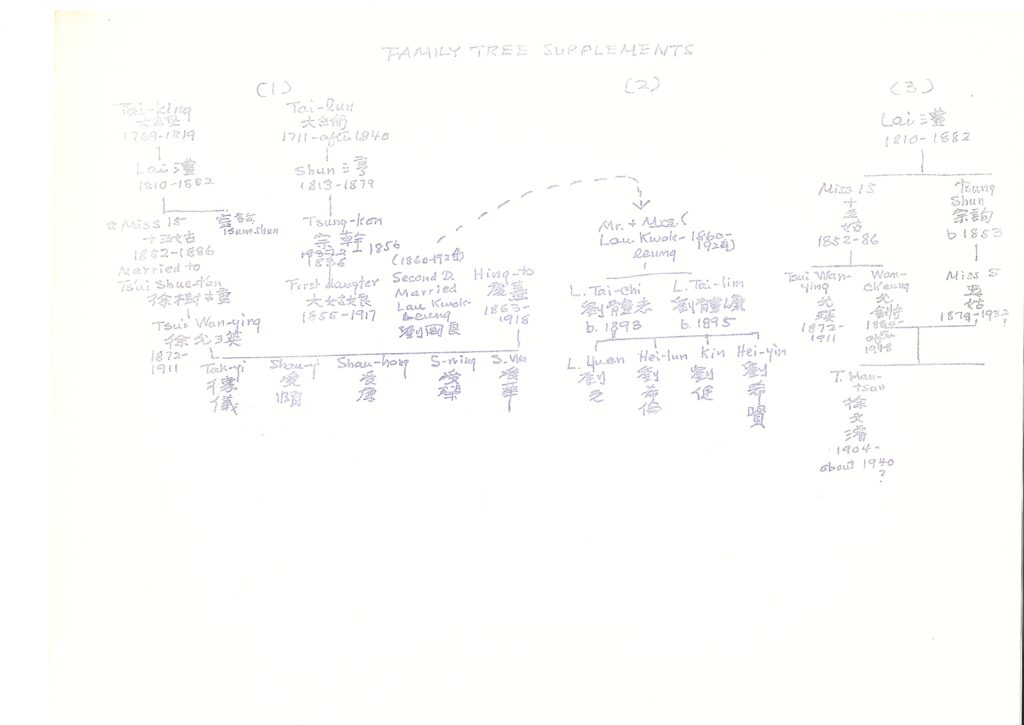Disclaimer: This post contains images of historical documents, some of which include perspectives and language reflecting the time in which they were written. The Claremont Colleges Library does not endorse all the views expressed in these documents.
This week I input some correspondences between Ch’en and his family members. In the past weeks we have introduced Ch’en Shou-yi’s academic contributions and social relationships. This week I would like to briefly introduce part of Ch’en’s family. Ch’en’s brothers like Stanley H. Chan (陳受康) were also scholars and left works in Ch’en’s collections of academic offprints. In order to study Chen Li (or Chan Lai, 陳澧), the brother of Ch’en Shou-yi’s great grandfather as well as the leader of Lingnan intellectuals, Ch’en studied his clan and left some family trees. Thanks to Ch’en’s research and correspondence, we are able to study his family and glimpse their life in the modern Chinese history.

Tak-yi (德儀) was Ch’en’s elder sister. Ch’en’s collection preserves her family’s letters to Ch’en when Ch’en and his wife were stuck in Shanghai due to the Japanese invasion. In a letter from Tak-yi to Ch’en, Tak-yi described her frightening experience during a Japanese airstrike in Canton. Thanks to Ch’en’s help from the United States, Tak-yi and her family were able to move to Hong Kong in 1937. Tak-yi’s children, Ch’en’s niece and nephew, were grateful to Ch’en, and felt worried about Ch’en’s situation in Shanghai. The children suffered through Japanese airstrikes, but luckily survived in Hong Kong. According to other governmental documents in Ch’en’s collections, Ch’en had completed his research in the US, and went back to China to continue his professor career in Peiping (now Beijing). However, due to the breakout of the Japanese invasion, Ch’en and his wife were stuck in Shanghai, and they had to return to the United States while searching for a job on an American campus. The war changed Ch’en and his family completely.
Lau Tai-chi (劉體志) is Ch’en’s elder cousin and Lau also completed his undergraduate program at Canton Christian College (Lingnan University). Ch’en’s collections preserved correspondences from Lau. Some of the letters from Lau discussed academic issues and other letters talked about their family. Lau mentioned his daughter’s weddings, his life, and his viewpoints on politics. Lau and Ch’en had many common friends, and some of Ch’en’s friends left letters admiring Lau and his wife, Tai-lim (體濂).

There are also some other materials, such as greeting cards, in Ch’en’s collection that disclose the life of Ch’en’s family members in both China and the US. During this chaotic era, like many other Chinese people, Ch’en’s family experienced the fortunate and misfortunate life. Ch’en’s collections on his family provide valuable resources to study China during this era.